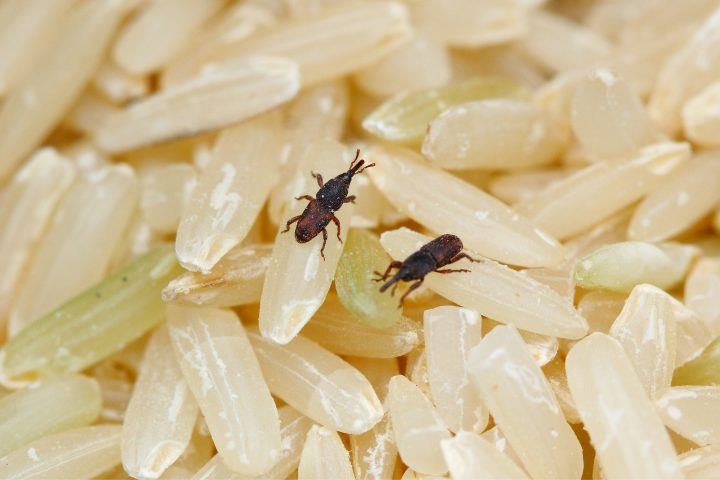
I. Introduction
A. Overview of Black Sesame Seeds
Black sesame seeds are small, nutrient-dense seeds often used in culinary applications for their distinct flavor and health benefits. However, gardeners may encounter pests that resemble these seeds, posing threats to plant health and productivity.
B. Common Pests Resembling Black Sesame Seeds
Several pests share a resemblance to black sesame seeds in size and coloration, making them challenging to detect and identify without close inspection.
C. Importance of Identifying and Addressing Pest Infestations
Identifying pests that mimic black sesame seeds is crucial for implementing timely control measures and preventing damage to plants. Early detection and intervention are key to minimizing pest damage and ensuring garden success.
II. Flea Beetles
A. Physical Description
- Size and Coloration
Flea beetles are tiny insects, usually black or metallic in color, resembling black sesame seeds in size and appearance.
- Distinctive Features
Flea beetles may have distinctive jumping behavior when disturbed, similar to fleas, making them difficult to capture and identify.
B. Habitat and Behavior
- Feeding Habits
Flea beetles feed on plant foliage, leaving behind characteristic tiny holes and pits, resembling damage caused by shotgun pellets.
- Plant Damage
Heavy infestations of flea beetles can cause significant damage to plants, stunting growth and reducing yields, particularly in young seedlings and tender shoots.
C. Control and Prevention Methods
- Cultural Control Practices
Implementing cultural practices such as crop rotation, mulching, and timely planting can help deter flea beetles and minimize their impact on garden crops.
- Natural Predators
Encouraging natural predators such as ladybugs, lacewings, and predatory beetles can help keep flea beetle populations in check and reduce the need for chemical interventions.
- Organic Pesticides
Applying organic insecticides containing neem oil, pyrethrins, or diatomaceous earth can provide effective control of flea beetles while minimizing harm to beneficial insects and the environment.
III. Spider Mites
A. Physical Description
- Size and Coloration
Spider mites are minuscule arachnids, often reddish-brown or black in color, with oval-shaped bodies that resemble black sesame seeds.
- Webbing Characteristics
Spider mites may produce fine silk webbing on plant surfaces, further complicating their detection and identification.
B. Habitat and Behavior
- Feeding Habits
Spider mites feed on plant sap by piercing leaf tissues with their mouthparts, causing stippling, yellowing, and eventual leaf drop.
- Damage Symptoms
Infested plants may exhibit symptoms such as yellowing leaves, stippled foliage, and reduced vigor, indicating the presence of spider mite infestations.
C. Control and Prevention Methods
- Environmental Controls
Increasing humidity levels and periodically spraying plants with water can help deter spider mites by creating unfavorable conditions for their survival.
- Biological Control Agents
Introducing predatory mites, ladybugs, or predatory insects such as lacewings can provide effective biological control of spider mites in garden settings.
- Horticultural Oils and Insecticidal Soaps
Applying horticultural oils or insecticidal soaps to infested plants can help suffocate spider mites and disrupt their life cycle, reducing population numbers over time.
IV. Aphids
A. Physical Description
- Size and Coloration
Aphids are small, soft-bodied insects, ranging in color from green to black, with pear-shaped bodies resembling black sesame seeds.
- Antennae and Appendages
Aphids have long, slender antennae and distinctive cornicles, or tubes, protruding from their abdomens, aiding in their identification.
B. Habitat and Behavior
- Feeding Habits
Aphids feed on plant sap using specialized mouthparts, causing curling, distortion, and yellowing of leaves, as well as the secretion of honeydew.
- Reproduction and Colony Formation
Aphids reproduce rapidly, giving birth to live young without the need for mating, leading to the formation of dense colonies on plant tissues.
C. Control and Prevention Methods
- Beneficial Insects
Attracting beneficial insects such as ladybugs, lacewings, and parasitic wasps can help control aphid populations and prevent outbreaks in garden settings.
- Natural Predators
Encouraging natural predators such as birds, spiders, and predatory insects can provide effective biological control of aphids and reduce the need for chemical interventions.
- Organic Control Measures
Applying organic insecticides containing neem oil, insecticidal soaps, or botanical extracts can help suppress aphid populations while minimizing harm to beneficial insects and the environment.
V. Conclusion
A. Importance of Vigilance and Early Detection
Identifying and addressing pests that resemble black sesame seeds is essential for preserving plant health and productivity in garden settings. Vigilance and early detection are critical for implementing timely control measures and preventing pest outbreaks.
B. Sustainable Pest Management Practices
Implementing sustainable pest management practices such as cultural controls, biological interventions, and organic pesticides can help minimize the impact of pests on garden crops while promoting environmental health and biodiversity.
C. Encouragement for Organic Gardening Practices
Encouraging organic gardening practices, including crop rotation, companion planting, and integrated pest management, can help gardeners reduce reliance on synthetic chemicals and create healthier, more resilient garden ecosystems.


